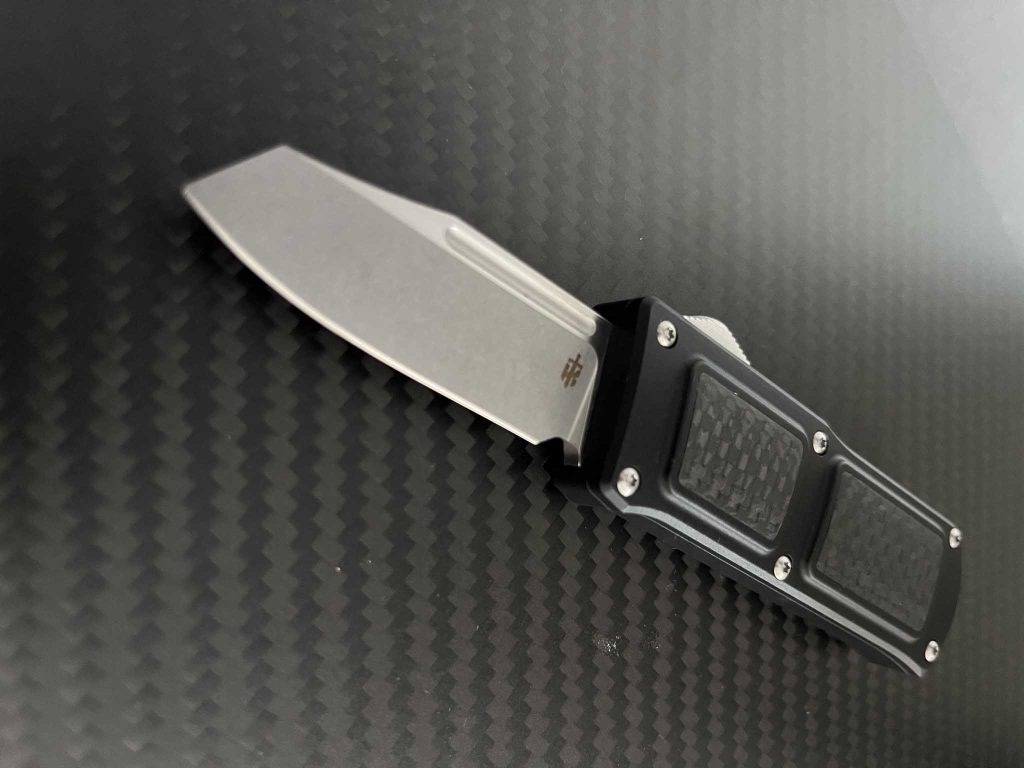Every area of interest develops its own vocabulary over time, which is true for knives in general — and OTFs in particular. Fans of these sorts of tools and weapons will pepper their discussion of them with references to a knife’s action, finish, blade design, handle material, intended use, and more. For those unfamiliar with OTFs, the verbiage can seem more than a little foreign, a fact that proves particularly true when they encounter the term “California legal knife.” In this article, we’ll discuss both federal and California knife laws, define what a California legal knife is, and mention several considerations you’ll want to keep if mind should you purchase one of these knives for use in the Golden State.
Federal Guidelines on Knives
Before we talk about California’s knife laws (and why one would need a California legal knife in the first place), it’s worth quickly reviewing federal knife laws, which have caused no end of confusion since their introduction in 1958. That year saw the passage of L 85-623, which came to be known as the Federal Switchblade Act. The Act made it illegal to manufacture, distribute, or sell switchblades across state lines. Interestingly, it never totally banned such weapons, leaving further restrictions to the states.
Another act in 2009 reshaped the legal landscape once again, codifying an exception that made legal “a knife that contains a spring, detent, or other mechanism designed to create a bias toward closure of the blade and that requires exertion applied to the blade by hand, wrist or arm to overcome the bias toward closure to assist in opening the knife.” What does that mean practically? Well, while virtually every automatic knife is legal from a federal standpoint, regulations can vary radically from state to state — which brings us to the state of California and its particular guidelines.
California Knife Laws
Like many states, California breaks down knives into two broad and simple categories: those you can carry legally and those you cannot. The former category gets further subdivided into legal knives you may conceal and those you may only carry openly. The good news is that any knife that’s legal to carry at all in California may also be openly carried. The bad news is that things get more complicated from there.
Knives completely outlawed in the state include …
- ballistic knives (which shoot a blade like a gun shoots a bullet)
- any automatic knife with a blade longer than two inches
- switchblades (i.e., out-the-side automatic knives)
- balisongs whose blades are longer than two inches
- dirks
- daggers
any undetectable knives (examples cited include belt-buckle knives, cane knives, lipstick knives, writing-pen knives, air-gauge knives, any knife constructed of a material that a metal detector cannot sense, and a pole-concealed blade known as a shobi-zue)
Possession, construction, or carrying of any of these sorts of knives is illegal in California. Dirks and daggers are an exception since they can be carried just so long as owners do so openly.
As we mentioned earlier, any knife that doesn’t fall into the above categories is legal in the Golden State. However, that doesn’t mean that you can necessarily carry it on your person or keep it in your car. California doesn’t have any sort of blade-length restriction on non-automatic folding knives. (Think slipjoints, spine locks, liner locks, and other similarly common models.) Still, if a knife opens with or is assisted by a spring, it will face restrictions. It’s these sorts of restrictions that make a knife “California legal.”
What Is a California-Legal Knife?
So what exactly *is* a California-legal knife? Simply put, it is some kind of automatic knife or balisong with a blade less than two inches long. California-legal knives must also have a bias toward closure. (The American Knife & Tool Institute defines a bias toward closure as the tendency “to remain closed unless the user desires or intends to expose the blade and that the blade will remain open until the user desires to fold or close the knife.”) That rules out blades such as …
- switchblades
- straight razors
- gravity knives
- any knife that opens with a flick of the wrist
Note that OTF knives, which deploy using a thumb switch, aren’t on that list. Because they have a closure bias and if they come with blades shorter than two inches, EDC OTFs are legal to own, purchase, and carry in California.
Other Considerations
Sadly, many laws and regulations aren’t easily understood or implemented, and that axiom remains true with discussing knife laws, especially in California. Before we delve further into the subject, though, understand that nothing in this article is intended to be legal advice. If you have questions regarding the law or what qualifies as a California legal knife, contact a qualified attorney.
You can see some of the complexity inherent in California’s knife laws when you consider the category of dirks and daggers. As we mentioned above, dirks and daggers are only legal if carried openly. However, if a folding knife qualifies as a dirk or dagger (which it would by lacking a handguard), it must also be carried only, and having it closed in your pocket would be illegal. Various municipalities may have their own rules, too, which adds another factor to consider.
Similarly, any EDC OTF that you want to take outside your place of residence in California must have a blade length of less than two inches and must not open out the side and must not deploy a blade with a push button. Handle size, blade shape, fabrication materials, speed of deployment, and other such factors do not factor into whether or not an OTF is considered California legal.
Browse our selection of knives, which includes California legal options.
